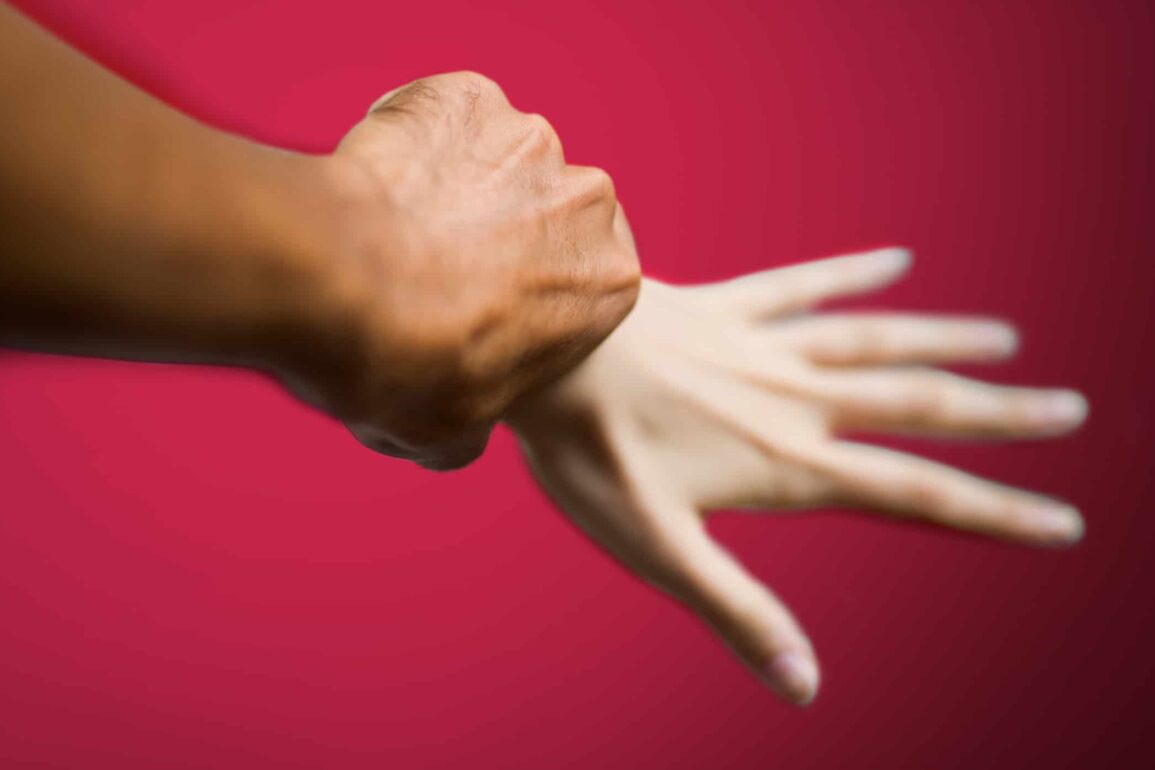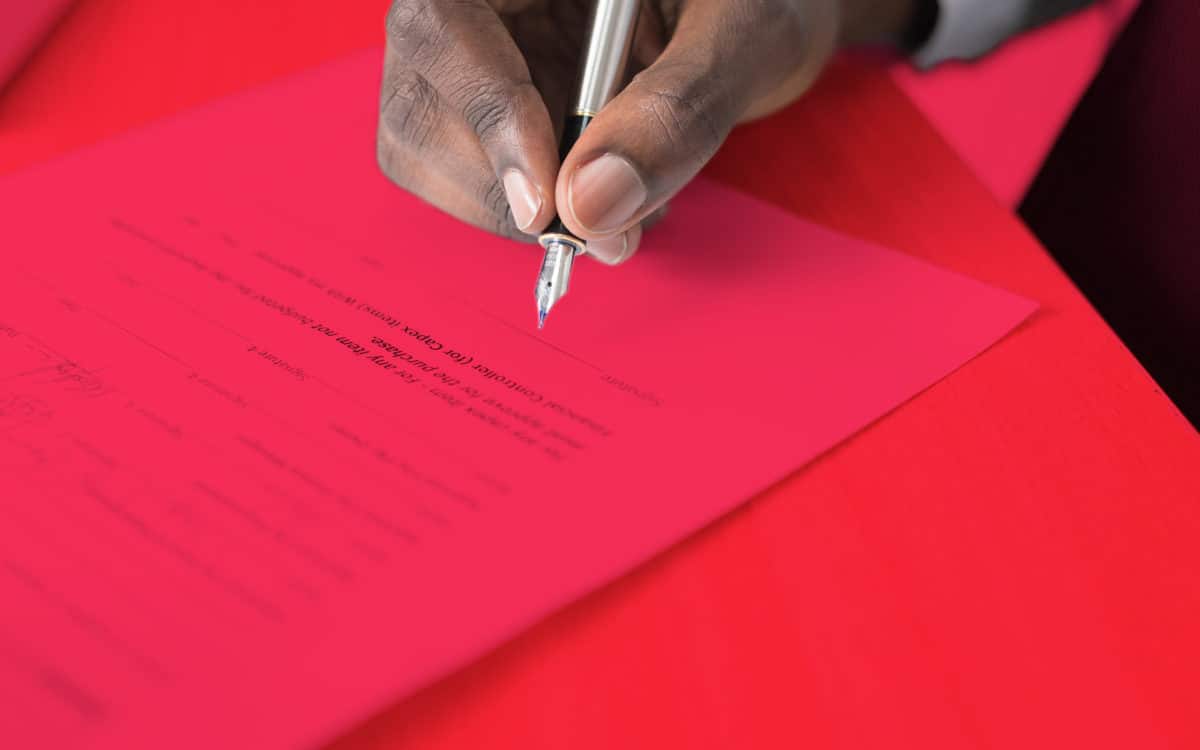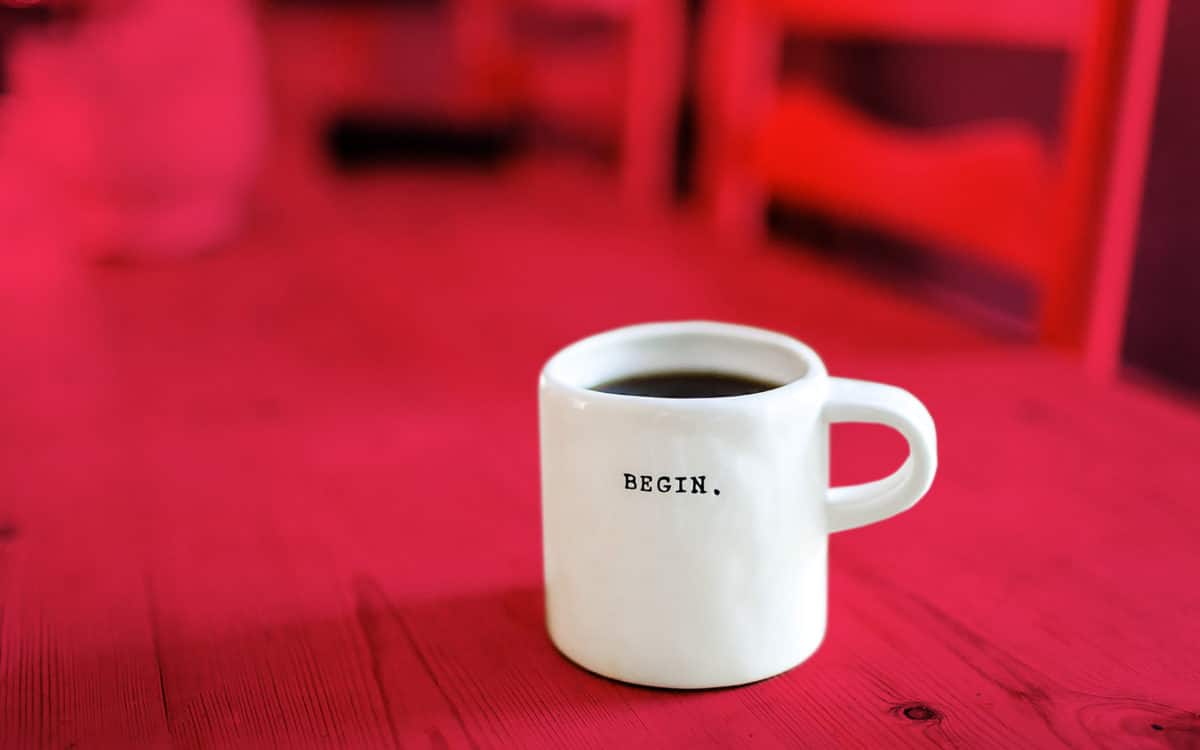Hands off: How to copyright a logo and protect your brand

Want to make sure that your business stands out from the crowd?
There are a few crucial things you’ll need to accomplish that goal.
First, you’re going to need an idea that speaks to your target audience – a product or service that makes their lives easier and more convenient. Once you have that, you’ll need a business name.
Your moniker will help to identify your business and capture the attention of your ideal customer.
Next, you’re going to need a logo – the heart of your brand’s visual identity.
While there’s a lot more to your brand than your logo, it’s impossible to ignore the impact that these brand marks have on the way customers and stakeholders perceive your company. The right logo instantly conveys important ideas about your business.
Just look at the playful bubble writing of Lego’s logo, or the bold typography and swooping Swoosh of Nike.
With a well-designed logo, you can convey critical information to your target audience in a single graphic. In seconds, your customers know what your company stands for.
Of course, designing the perfect logo isn’t easy.
Most companies spend months trying to find the ideal mark, or they spend their hard-earned budget paying for professionals to help them craft the right image.
When you’ve spent both time and cash on creating the right logo, it makes sense that you’d want to ensure that your image is protected.
That’s why logo copyright is so essential.

How can I protect my logo from being copied?
Just like an effective business name, your logo differentiates your company, and helps to position your organization in your target market.
Unfortunately, there are plenty of unscrupulous companies out there that are happy to steal your hard work and claim it as their own. These businesses will take an un-protected logo and slap a copyright on it, so that you’re left having to start your branding strategy over from scratch.
More small businesses than you’d think start their search for the right logo on Google, searching form an image that they can copy and paste into their brand assets.
When you trademark and copyright a logo, you effectively protect your design from being stolen and used by other companies or brands.
Once you’ve implemented your intellectual property protection, any other entity that attempts to use your logo without your permission can be taken to court.
Before you learn how to get a logo copyrighted, it’s worth making sure that you know what a copyright actually is. A copyright on your logo means that you are legally protected regarding the use, rights, and distribution of your logo.
If you’re a copyright owner, then the Copyright Act of 1976 indicates that you can access the exclusive right to reproduce your work, distribute that work, and display your logo wherever you like.
Notably, a copyright and a trademark aren’t the same thing. Trademarks registered with the US patent and trademark office allow owners to sue infringers for mis-use.
Trademarks generally offer more comprehensive and long-term protection over logo designs than you get when copyrighting a logo.
We’ll come back to the difference between a logo copyright and a trademark a little later, to help you better understand what kind of protection you need for your brand identity.
For now, let’s take a look at the benefits of registering a copyright for your logo design.

The benefits of copyrighting a logo to defend your brand
A logo copyright, just like a trademark or patent, is a form of protection intended to give you ownership over your intellectual property. Copyrights and trademarks can apply to any creative work or tangible idea, provided that you’re dealing with something original.
When you copyright or trademark your intellectual property, such as a logo or name, you’re asking the government to support you in ensuring that no other brand can use your property for their own gain.
Additionally, copyrighting a logo can help to protect your brand reputation too.
Imagine if you saw Nike’s logo spread across some low-quality running shoes that fell apart the moment that you put them on. You wouldn’t know at first if you were dealing with a company that was stealing Nike’s image.
The first thing you would think is that you could no longer trust the quality of the products that you bought from Nike. In the same way, if another, lower-quality brand used your logo to define their services or products, you risk your business coming into question.
One thing worth noting when you’re wondering about copyrighting a logo is that any artistic image in the US is automatically protected by copyright law as soon as it’s drawn.
In the US, the law demands that images automatically belong to the artist that created them, unless the ownership of the image has been transferred somewhere else.
Additionally, some artists and designers can also classify their content as being available to the public or free to use.
However, there’s a difference between automatically having a copyright for your logo and copyrighting a logo with the US Copyright Office.
Registering the ownership of your brand image with the right legal bodies means that you can enforce your protection in court.
With a legal copyright, you can:
- Prevent confusion in the marketplace caused by two companies using similar logos.
- Ensure that your brand identity remains unique, distinct, and memorable.
- Protect your brand reputation from people either deliberately or accidentally working to destroy it.
- Ensure that no one else in your chosen industry or niche can “borrow,” copy, or adapt your design for their own logo.

How to copyright a logo: Before you begin
A distinctive, memorable, and unique logo is an essential asset to any business.
Just like an effective brand name, or a compelling range of products, your logo helps you to stand out from the crowd and capture the attention of your target audience.
However, while an excellent logo can be very difficult to come up with, it’s incredibly easy for other companies to come along and steal your ideas.
There’s a common, albeit incorrect, idea in the digital world today, that any content found online is available to the public. When struggling to find their own logo ideas, many businesses assume that they can jump on Google on take inspiration from the images they find there.
This often means that a lot of small businesses end up with logo designs that are very similar to existing emblems.
Although copyright exists for a logo as soon as it’s drawn or designed, that copyright protection may not be as extensive as you think.
The optional registration of your copyright gives you a lot more advantages as a logo owner, including the ability to sue other companies in federal courts throughout the US. Although you will need to ensure that your logo is available to be copyrighted before you begin.
If you’re wondering “How do I get my logo copyrighted?” Make sure you:
1. Know what kind of property can be copyrighted
First things first, it’s important that you know what kind of property can be copyrighted. Works of art, and logos, for instance, are available to be registered with a copyright in the US. However, you cannot copyright “familiar symbols, designs, or typographic variations”.
Because common symbols and designs aren’t available to be copyrighted when you’re claiming ownership of your logo, it can be very difficult to stop other people from using your logo with copyright alone.
Unless your design is 100% unique, then you might need to combine your copyright registration with a trademark and other forms of protection.
2. Make sure your logo is unique and creative
The limitations of copyrighting mean that you can’t use copyrights to protect colors, names, or the existing works of others. For instance, if your logo is your name surrounded by a circle, you’d probably have a hard time getting it protected via a copyright.
To qualify for protection when you’re copyrighting a logo, you’ll need to ensure that your design is creative enough to qualify for logo copyrights under the “artwork” category.
A very basic logo isn’t going to be sufficient in this case. For example, the standard image of a raven for the Baltimore Ravens wouldn’t have been copyrighted by the US office.
While the picture that the NFL brand created with the help of a professional designer was deemed to be sufficiently creative to be given protection.
3. Avoid using anything that has already been claimed
When you’re looking for the perfect logo, you may notice that a lot of the companies in your industry or niche use similar designs or styles to capture audience attention.
Just because there are a lot of similar images out there, doesn’t mean that you can get away with using an emblem that’s too close to something else on the market.
If you’re working with a professional logo designer, then that expert will do their due diligence to make sure that you’re not trying to copyright a logo that’s too close to anything else in your industry.
So, if you’re conducting your own design work, you’ll need to make sure that the logo you want to claim hasn’t already been registered elsewhere. You can search through the US Copyright Office to find out if there are any problems with your design.

How do you copyright a logo: Getting started
Both USPTO and the Copyright Office have services available online that allow individuals and companies to copyright images and other properties themselves.
In some cases, you may decide that you would prefer to ask for the help of an intellectual property attorney instead. An attorney can do more thorough research into the databases available for logo designs and trademarks.
This means that you can ensure that you’re not attempting to copyright something that another business already has ownership over.
Additionally, intellectual property attorneys also know how to keep the process of applying for a logo copyright or trademark more efficient.
An attorney with knowledge of IP law or your business can help if you need to file a lawsuit against someone who is violating your copyright or trademark too.
Whether you decide to go it alone or get the assistance of a lawyer, copyrighting a logo isn’t as complicated as it might seem. All you need to do is register your ownership of your copyright with the Office for United States Copyrighting.
You can do this either by sending a document in through the mail or submitting an application online.
Typically, and at the time of publication, it costs between $35 and $85 to officially copyright a logo. The price of your application will depend on whether you’re applying online or by mail, and on which category you select.
These are the steps involved in copyrighting a logo:
- Fill out the application form, either on paper or online: You will need to enter various pieces of personal information, including your name, your contact details, and a high-resolution version of your logo.
- Pay a registration fee: Usually, your logo registration fee will be around $39. You can pay to copyright a logo online using a check, a deposit, or a credit card payment.
- Wait for a response: If you fill out and submit your forms by direct mail, then it can take up to 13 months for the government to process your request. The waiting time if you submit your application online is likely to be under 8 months.
Keep in mind that regardless of the method you choose to apply for your logo copyright, your copyright will be effective from the date that you submit your form, not from the date of approval.
That means that if someone tries to start using your logo in between the time that you send your form to the US copyright office, and the time that you gain approval, you can still take that individual to court.
Is trademarking better than copyrighting?
For most companies, choosing to copyright a logo is a no brainer.
In the US, artistic works and intellectual property is already copyrighted from the moment that it is created. All you need to do is register your ownership of that copyright to start being protected. There are a few issues with copyrighting that need to be considered, however.
For instance, in order for a work to have protection via copyright, it needs to adhere to a very specific level of creativity. Many logos simply aren’t creative enough to be properly copyright protected.
If your brandmark isn’t complex or ornate, then you could struggle to get the level of protection that’s required to defend your brand identity.
The good news with logos is that many of them will qualify for both copyright protection and trademark protection. With that in mind, it’s often a good idea for businesses to think about not just how to copyright a logo and name, but also how to trademark those assets too.
Trademarks are often much easier to defend than copyrights, particularly because there are no registration requirements in the US for obtaining a mark or suing for trademarking infringement.
However, it is worth noting that acting against trademark issues can be a very expensive and complicated process. Additionally, the narrow scope of trademark law means that applying for a trademark might be confusing for many brands.
If you’re not sure whether your brand logo and other assets need to be copyrighted or trademarked, then the best thing you can do is speak to an intellectual property attorney.
A lawyer specializing in IP matters can help you to figure out what sort of defense you need to have in place for your business identity. At the same time, lawyers can also assist with improving your chances of a successful application too.
While answering the question “How do I get my logo copyrighted” is often as simple as filling out the right forms online, there are some complexities in this area too. Logos exist in a strange area of intellectual property law, where copyright and trademark protection often overlap.
Most of the time, many logos in the US and around the world play it safe by getting dual protection between copyright and trademark.
You might even find that if you can’t apply for a copyright for your logo, you can still improve your chances of protecting your brand assets by getting a trademark assigned to your company instead.
What to do after you copyright a logo
So, what do you do after you have successfully registered for logo copyright protection?
The first step is usually affixing the copyright symbol to your logo. You’ve probably noticed the letter C surrounded by a circle that is attached to some of the logos online. You can also add the TM trademark symbol if you apply for trademark registration too.
Some companies even decide to add some legacy to their brand identity by adding the data when their logo was first published.
Adding a date to your copyrighted logo can help to support your strategy for brand transparency.
It’s also important, if you’ve had someone else design your logo for you, to ensure that you actually have ownership of your brand mark. In the US, the creator of the logo artwork automatically owns the design. They can transfer the rights to that logo over to you, however.
Make sure that you know which forms you need to sign and what you need to do to claim your logo.
Usually, when you register your logo copyright, you’ll be able to automatically claim ownership of the design. The US government may ask you to prove that you own the artwork with a document of purchase or something similar between you and your designer.
Extending your logo copyright protection
Once you know for certain that you have ownership over your logo in the US, you can begin to consider your options for extending your protection. It’s also worth noting that the claim you have over your copyright in the US is only relevant in one country.
If you want to take your business and your logo to other parts of the world, then you will need to apply for protection in those locations too. Speak to your IP attorney for more advice about what to do when applying for trademarks and copyrights in other parts of the globe.
Additionally, when you’re expanding your logo copyright protection, you can also think about whether you want to obtain trademark rights. The USA supports the protection of trademarks for as long as your logo continues to be associated with your services or goods.
On the other hand, your copyright protection will only last for a limited timeframe.
Trademark protection isn’t quite as broad as copyright protection. Trademarks won’t prevent other people from using something similar to the logo that you already have if they’re selling different services and goods, for instance.
Many businesses find that having both copyright and trademark protection in place gives them an extra layer of defense when dealing with intellectual property and brand assets.

Taking advantage of logo copyrights
Ultimately, when you spend your precious time and money building a recognizable identity for your company, the last thing that you want is for someone to come along and steal it.
Learning how to copyright a logo and name is one of the best things you can do to protect your critical company assets.
The good news for businesses of all shapes and sizes is that you can easily trademark and copyright your logo online, without having to spend a ton of money.
You can even get professional assistance every step of the way, from logo designers, like the team here at Fabrik, to IP attorneys.
Make sure that you defend your brand identity with the right copyright protection.
Fabrik Brands: Creative Industry











